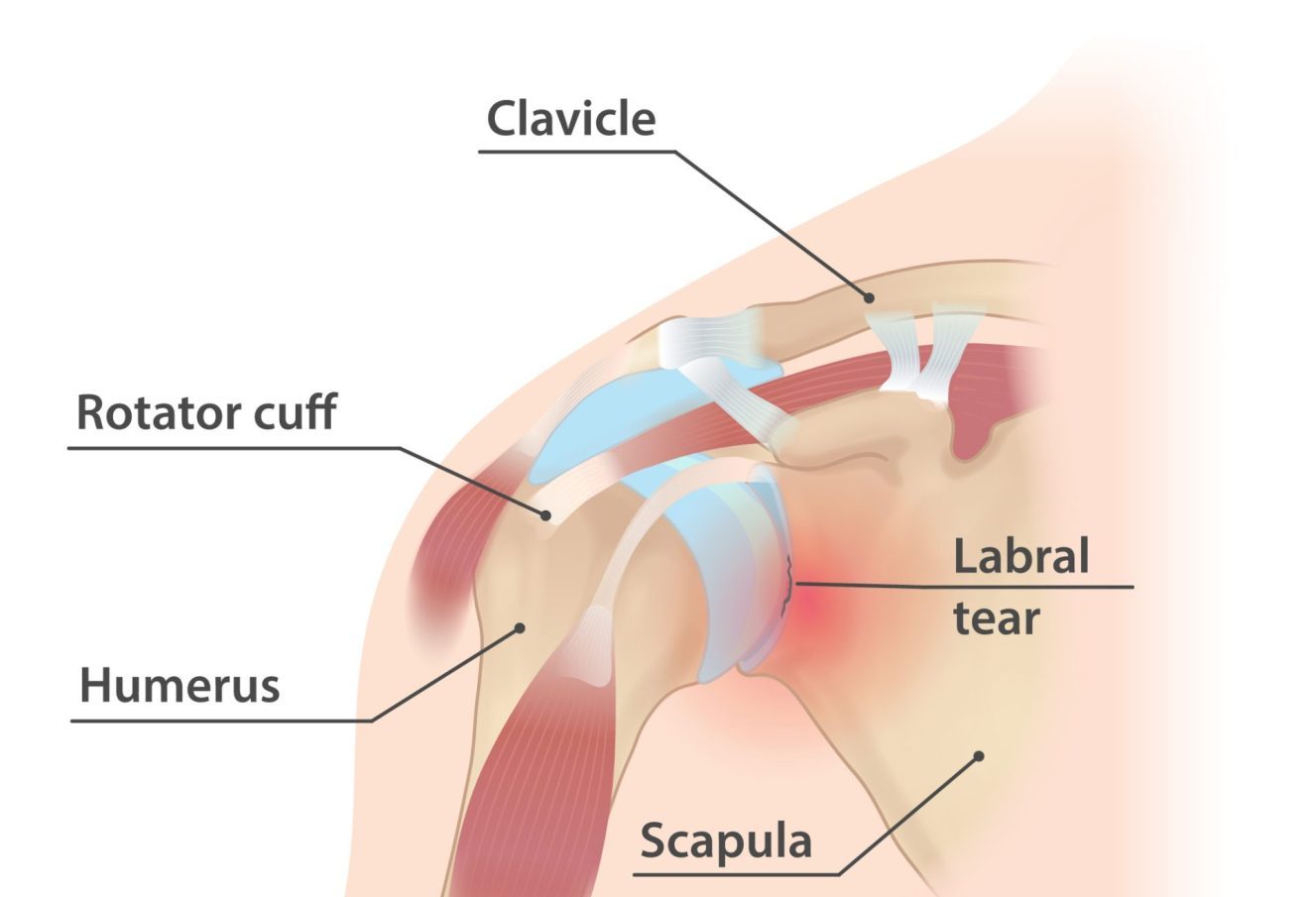A shoulder labral tear is a common injury that affects the labrum, a ring of cartilage that surrounds the shoulder socket. The labrum provides stability to the shoulder joint and helps to keep the upper arm bone (humerus) securely in place. When the labrum is damaged, it can lead to pain, instability, and limited shoulder function. Physiotherapy plays a crucial role in the management and rehabilitation of shoulder labral tears and is typically the preferred option for initial management. Sometimes surgical intervention is required to achieve a full recovery. By following the 5 stages of rehab, individuals with this condition can achieve pain relief, improve shoulder stability, and restore optimal strength and function.
- Pain and symptom management: The initial stage of rehab focuses on reducing pain and managing symptoms associated with labral damage. Physiotherapists may utilize various techniques such as manual therapy, ice or heat therapy, and gentle exercises to alleviate pain and inflammation in the shoulder. They may also provide guidance on activity modification and lifestyle changes to minimize stress on the affected area.
- Range of motion: Once pain is under control, the next stage involves restoring and improving the range of motion in the shoulder joint. Physiotherapy exercises may include gentle stretching techniques to increase flexibility and mobility in the shoulder. Passive and active range of motion exercises help to restore the full range of motion in the shoulder joint and promote fluid movement.
- Motor control: Stage 3 of rehab focuses on enhancing neuromuscular control and stability around the shoulder joint. Physiotherapists design exercises that target the muscles surrounding the shoulder, including the rotator cuff muscles, deltoids, and scapular stabilizers. These exercises aim to improve muscle strength, control, and coordination to provide stability to the shoulder joint. Proprioceptive training and specific exercises that challenge balance and coordination are often included to improve motor control.
- Strengthening: In stage 4, the emphasis is on strengthening the muscles surrounding the shoulder joint to provide support, stability and return to full function and performance. Physiotherapy exercises may include resistance training using bands, weights, or bodyweight to target the upper limb muscles.
- Maintenance: The final stage of rehab focuses on maintaining the gains achieved in the previous stages and preventing the recurrence of symptoms. Individuals are encouraged to continue with a tailored exercise program that includes a combination of range of motion exercises, strengthening exercises, and functional movements. Physiotherapists provide guidance on proper movement patterns, posture, and activity modifications to prevent overloading the shoulder and maintain shoulder health in the long term.
It’s important to note that the management of shoulder labral tears should be individualized, and treatment approaches may vary depending on the severity of the tear, the patient’s goals, and the specific needs of each individual. Range Physios work closely with their patients to develop personalized treatment plans, monitor progress, and provide education and guidance throughout the rehabilitation process. By addressing pain, improving range of motion, enhancing motor control, and strengthening the shoulder muscles, physiotherapy can effectively manage shoulder labral tears and help individuals regain pain-free shoulder function and stability.
For more information regarding labral tears please visit:
https://www.choosept.com/guide/physical-therapy-guide-shoulder-labral-tear


